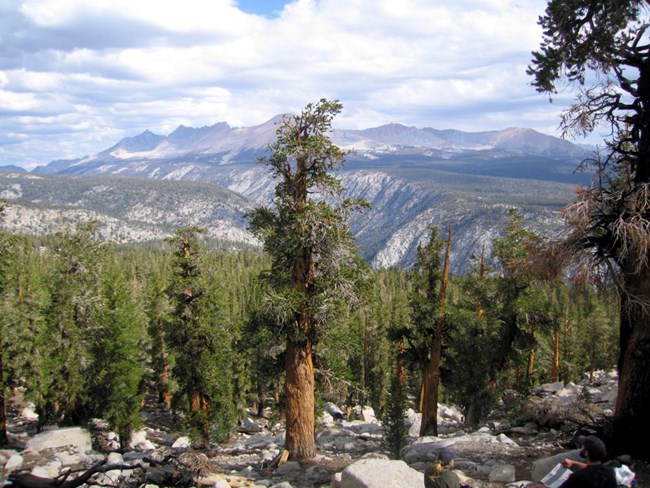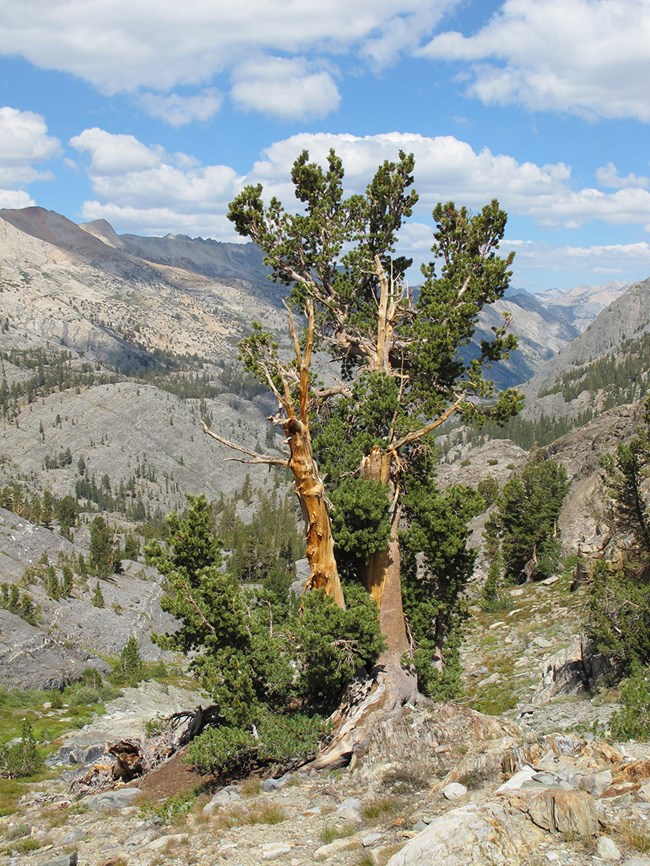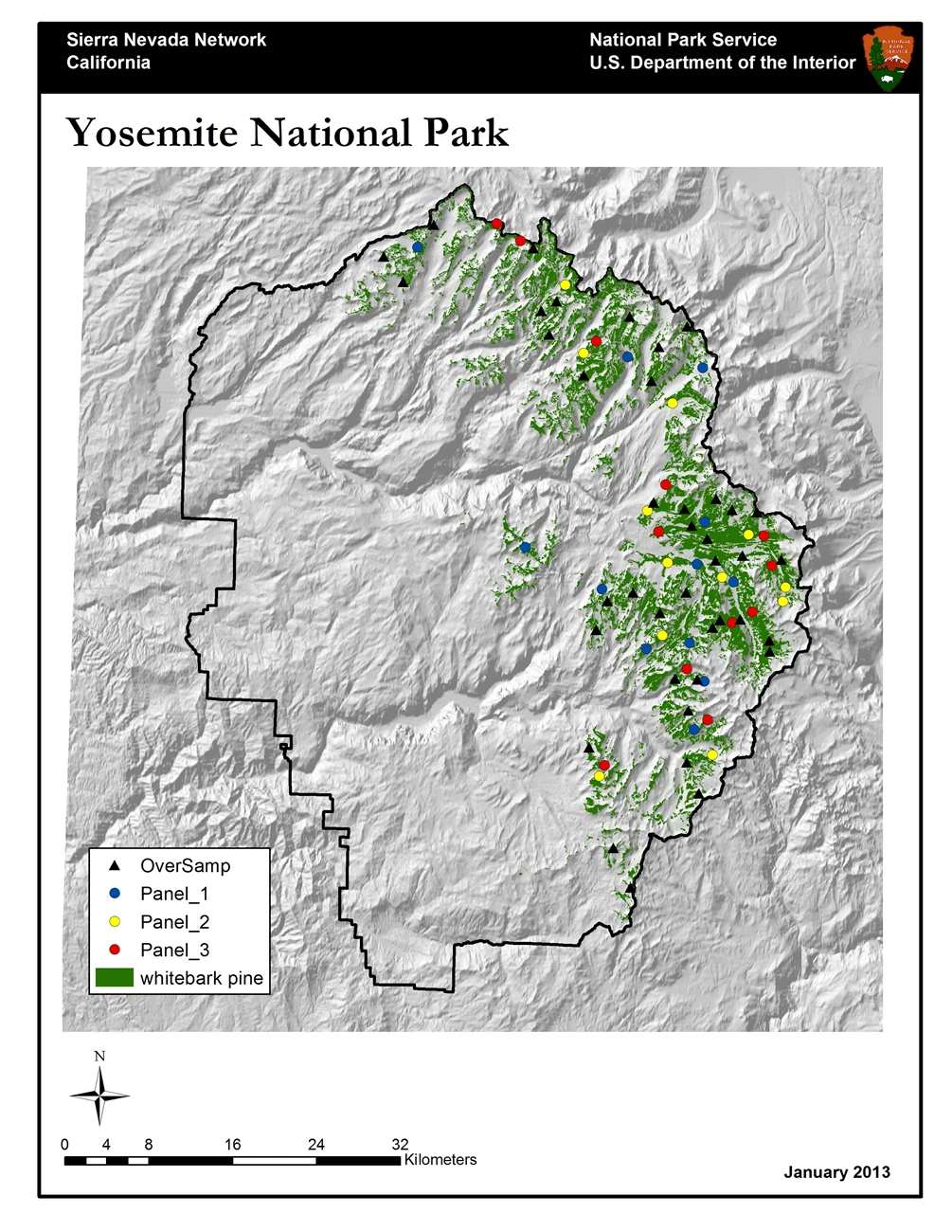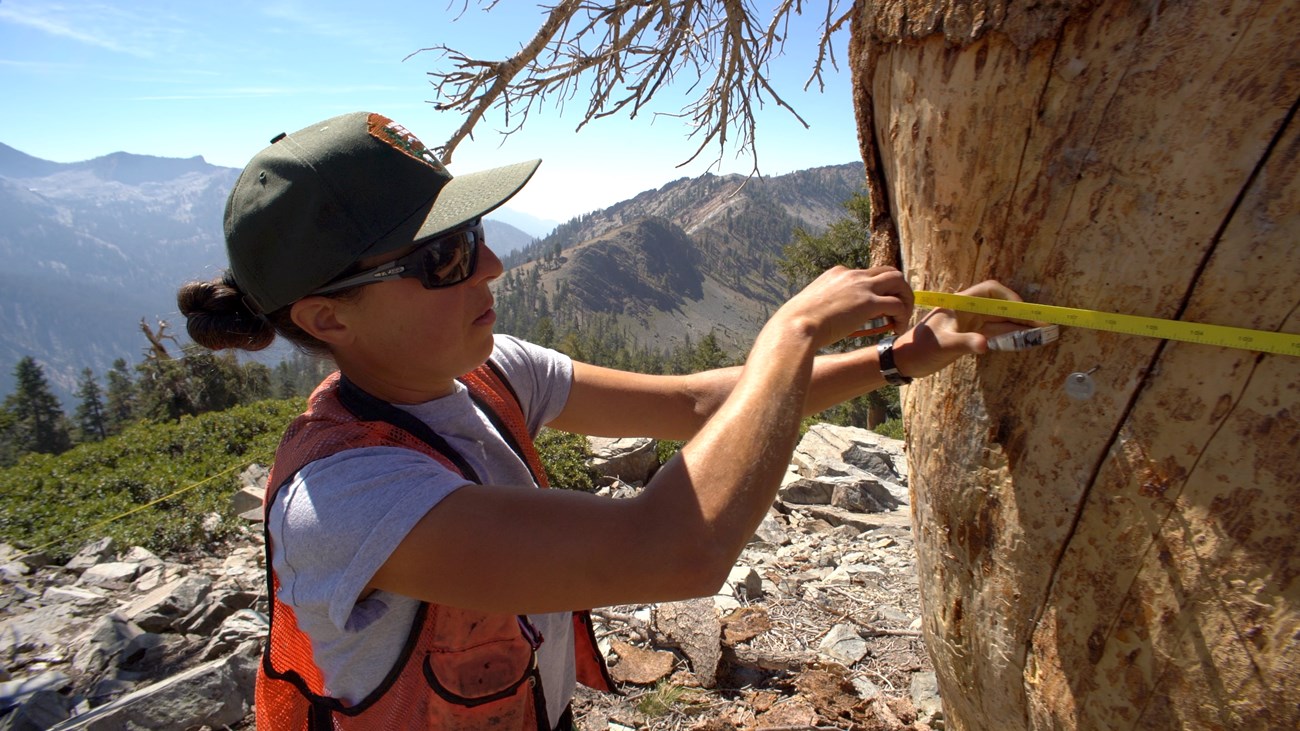Last updated: September 2, 2025
Article
High-elevation Forest Monitoring Overview

Park.
Photo: Tony Caprio
Background
Whitebark (Pinus albicaulis) and foxtail (P. balfouriana) pine are five-needle white pines that occupy high-elevation Sierra Nevada treeline and subalpine habitats, environments often too harsh for other tree species to thrive. Because these pines often occur in pure to nearly-pure stands, they can have a large influence on key ecosystem processes and community dynamics, such as regulating snowmelt and stream flow and providing habitat and food resources for birds and mammals. These pine species are currently threatened by the combined effects of multiple novel stressors. Severe declines in whitebark pine are occurring nearly range-wide. On December 15, 2022, the U.S. Fish and Wildlife Service listed whitebark pine as threatened with extinction under the Endangered Species Act. Whitebark and foxtail pine reach their southernmost distribution in the Sierra Nevada range where populations of both species are still relatively healthy, however, increasing local tree mortality has been documented starting in 2021 for both species.
The Sierra Nevada Network worked with two other Inventory & Monitoring networks —Klamath and Upper Columbia Basin — to develop a monitoring protocol for white pine species in five national parks. The Sierra Nevada Network initiated monitoring of whitebark pine and foxtail pine in Sequoia & Kings Canyon and Yosemite in 2011. Similar monitoring methods across these networks will facilitate regional analyses of status and trends of forest population dynamics and incidence of pathogens and insects.

Park.
Photo: Peggy Moore
Stressors and White Pine Declines
White pines are important species in many subalpine ecosystems and are currently experiencing population declines, particularly in the Rocky Mountains and the North Cascades, due to a non-native pathogen, climate warming, and unprecedented mountain pine beetle outbreaks.
A major threat is the non-native fungal pathogen (Cronartium ribicola) which causes white pine blister rust in five-needle white pines. Blister rust damages and kills these pines by girdling branches and trunks, which restricts nutrient flow; it also causes cankers in the trees’ bark, making trees more susceptible to bark beetle attacks.
While mountain pine beetle is a native species and has historically had periodic outbreaks, the recent epidemics in high-elevation western forests are considered unprecedented in duration and magnitude over the past 200 years. Warming temperatures play a role, facilitating mountain pine beetle activity at higher elevations and for longer time periods seasonally at lower elevations. Whitebark pine are declining rapidly throughout much of their range due to these combined threats.
While whitebark and foxtail pine populations have been relatively healthy in the Sierra Nevada, increased mortality has been observed in both species since 2021. In 2022, Sierra Nevada Network and US Geological Survey partners received US Forest Service Forest Health funds to investigate the causes and document the extent of subalpine pine mortality in the network parks. Formal surveys of recent elevated subalpine pine mortality started in the summer of 2023. This survey extends beyond our network of monitoring plots, where so far, limited mortality of these species has occurred.
Monitoring
From late June through September, field crews hike to plots randomly located in the high-elevation white pine forested areas in Sequoia, Kings Canyon, and Yosemite national parks (Figure 1). Plots are 50 x 50 meters in size, and all trees within the plots are evaluated and assigned numbers so they can be individually tracked. Tree- and plotlevel data are collected to determine the status and trends in:
- forest structure
- species composition
- demographic rates (birth and death rates)
- cone production
- incidence and severity of white pine blister rust
- occurence of mountain pine beetle
- dwarf mistletoe infection
Monitoring results are shared with park staff through annual reports, periodic comprehensive status and trend reports, resource briefs, newsletter articles, seasonal training sessions, and presentations. The Sierra Nevada Network website provides a project overview and links to related information, the monitoring protocol, and any reports that are available.


Photo: ©Michael Durham
Management Applications
The high-elevation forest monitoring project provides information on the condition of white pine forests and how pathogens and disease are affecting forest health. This information:
- Helps park Managers anticipate short- and long-term changes to high-elevation forest ecosystems
- Allows early detection of population changes in white pines that may warrant management intervention
- Is useful for park Natural Resource Condition Assessments, Resource Stewardship Strategies, and Wilderness Stewardship Plans
- Contributes meaningfully to the broader regional assessment of the status and trend of white pine species across western North America
- Provides readily interpretable stories to share with the public regarding the impact of a variety of human-related stressors on high-elevation forests
More Information
Anne Pfaff, Program Manager
National Park Service, Sierra Nevada Network
